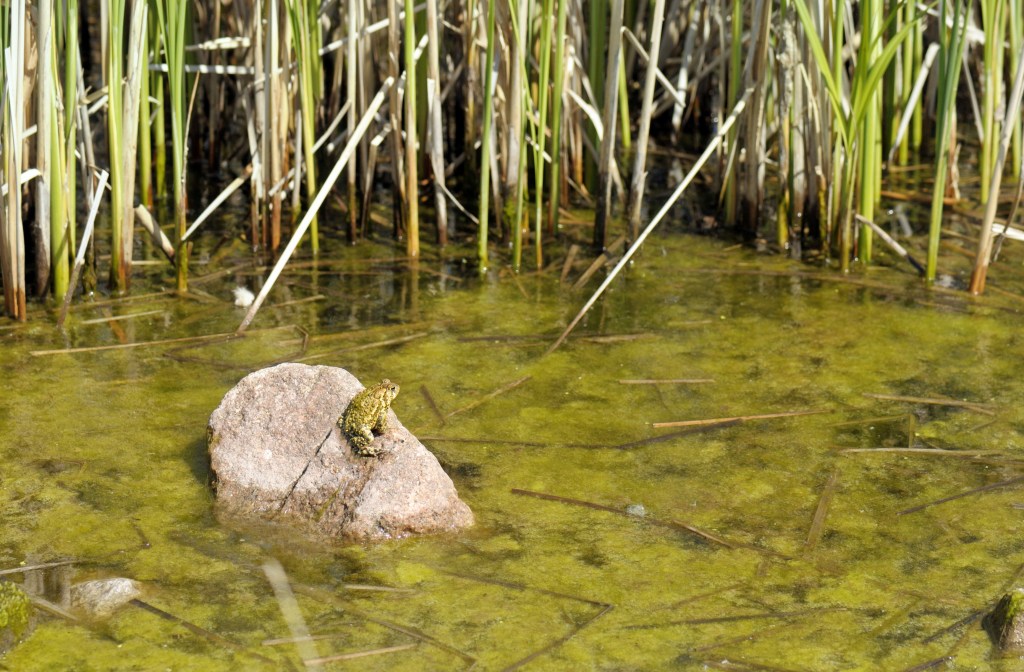HOME & GARDEN SPOT: Naturally Alabama: Wild weed in our waterways
Published 1:00 pm Wednesday, July 22, 2020

- Algae is the only “naturally occurring” pond plant. All other plants have to be brought to the pond by ground animals, birds or humans.
As we plod our way through the heat of summer, I think about taking a dip in a cool body of water.
Being raised up north in Michigan, I was never far from a swimming hole. Michigan calls themselves “the Great Lakes State.” I grew up on the water. Swimming, fishing and boating (the rowing kind) were always a part of my life. As an adult, I shared my love of water with my daughters, and now as G-daddy, I encourage the “grands” to take a plunge every chance I get.
Trending
Working for the Alabama Cooperative Extension System gives me a number of opportunities to get close and personal with water. I get to visit farm ponds, forested creeks, streams and rivers, as well as clean-up and streamside restoration projects. According to the Alabama Water Watch program at Auburn University, 10% of all the freshwater flowing in the U.S. either flows through or originates in Alabama. Alabama is No. 1 in species of freshwater crawfish, fish, mussels, snails and turtles. Alabama has 132,000 miles of rivers and streams, which is enough to circle the Earth five times.
Truly, Alabama has some mighty nice water!
With all this water, we also have the accompanying aquatic plants which complement the water. Some of these plants are helpful (by retaining soil and filtering impurities from the water), and some of these plants are harmful (by clogging waterways). Here in Alabama, we have about 120 different plants growing in our ponds. In this article, I want to address these and help you learn how to clean them out of your pond.
For years, we have been told that fish need plants. If plants were required for fish to survive, then all of the fish in the open oceans would die. The vast majority of the fish and mammals in the oceans swim out in the open. It’s only around the shorelines, and in water shallow enough for the sun to penetrate, where we find plants.
In the open oceans, one plant feeds the multitudes of higher forms of life. This plant is called phytoplankton. Phytoplankton is microscopic algae. Along with the phytoplankton swims zooplankton, or microscopic animals.
This is the beginning of the food chain and the oxygen cycle on the Earth. The lungs of the Earth are its massive oceans.
Trending
Remember, water covers about 75% of the Earth’s surface. Every time phytoplankton makes its food through photosynthesis, it makes oxygen. Phytoplankton is the one plant necessary for life in every body of water. Collect rainwater and let it sit outside for a few days. Green stuff starts growing — that’s phytoplankton. Now, let us go back and look at our ponds.
When the pond was built, it was merely a dirt hole on the back 40. There was no water in the pond and no aquatic plants, either. Rainwater slowly filled the pond, and soon thereafter phytoplankton started collecting on sticks and rocks underwater.
I like to say, algae is our only “naturally occurring” pond plant; all other plants have to be brought to the pond by ground animals, birds or humans. Those other plants are too many to name, but we can categorize them into three categories: emerged, floating and submerged.
Emerged weeds are rooted in the muddy bottom and “emerge” or stand up out of the water. Floating weeds do exactly that — they float on the water surface. The submerged weeds are rooted to the bottom and normally stay underwater. They come to the surface when they become overcrowded on the bottom, or when they break off from the parent plant. They will float for a while, then sink and root to the bottom in a new place.
Did you notice how I changed from calling them plants to calling them weeds? Unwanted plants are called weeds. In fish pond settings, most plants are weeds.
We manage plant growth a number of ways. Pond construction, fertilization, water levels and mechanical, biological and chemical control all help to manage unwanted weeds. By digging steep, deep sides to a pond and keeping the phytoplankton healthy through fertilization, the sun cannot penetrate deep into the water.
Without the sun, plants cannot grow. Other ways to manage weeds are to rake them, or have grass-eating fish like grass carp eating them out.
Finally, we come to herbicides. Herbicides are so widely used because they work so well. I can look at the plants you want to keep and see the weeds you want out, and there is normally a herbicide that will do what you want. If you have weeds in your pond, holler at the Limestone County Cooperative Extension Service. We can help you.
For more help or to ask questions, visit www.aces.edu or call 256-232-5510.
— “Naturally Alabama” is written by Certified Forester Andrew J. Baril of the Alabama Cooperative Extension System. Email questions to Baril at ajb0012@auburn.edu, or call 205-221-3392.





